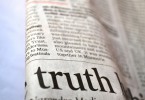“Occupy Wall Street” teaches PR lessons — and risks of rushing to judgment.
Walking past the “Occupy Wall Street” protest in New York City, as I did recently, it would be easy to dismiss its relatively small size, incoherent message and messengers who (for the most part) don’t look and sound like mainstream America. To do so would be a mistake. There’s a level of public relations sophistication at work here that could have unpredictable consequences.
Case in point: following the Oct. 1 arrest of some 700 protesters on the Brooklyn Bridge, a PR battle ensued:
- The protesters immediately claimed the police had tricked them by letting them onto the bridge where they could be arrested. This was reflected in the initial coverage of the event.
- The police responded that they had issued clear warnings for demonstrators to use the bridge’s walkway, not the roadway. The New York Times updated its online story to reflect this.
- On Oct. 2, as we’ve seen so often following clashes between police and protesters, “day-two” stories focused on the release of videos by both the police and protest organizers, each claiming they had acted properly.
- On Oct. 3, The Times found itself in the protest movement’s crosshairs, as a clever PR piece compared the newspaper’s initial protester-friendly lede (“After allowing them onto the bridge, the police cut off and arrested dozens. …”) with an update that ran 20 minutes later. (“In a tense showdown over the East River, police arrested hundreds … after they marched onto the bridge’s Brooklyn-bound roadway.”)
The PR piece went viral, attracting thousands of page-views, tweets and retweets — most expressing outrage about The Times’ alleged bias. It also fed a narrative about powerful forces colluding to suppress democratic expression.
In The Times’ defense, while the initial report reflected the protesters’ argument, the updated story focused on the facts that were not in dispute and then allowed each side to air its perspective. While this may be fair and ethical journalism, such nuances were lost in the rush to judgment that happens so often on the social web.
So, what should PR professionals make of this? Here are three lessons:
- Communications power has shifted, perhaps permanently. Those who master the tricky task of both harnessing and unleashing the power of the social web can become truly powerful. While it strains credulity to compare the Wall Street adventurers and their imitators in other cities to the courageous multitudes who challenged the dictators of the Arab world earlier this year, they are using many of the same strategies and tactics: start with a legitimate public concern; mobilize resources, people and messages through social media; attack the credibility of traditional sources of authority; drive media coverage with a sophisticated sense of theater; repeat and grow.
- Grassroots movements attract the powerful. “The first one now will later be last,” Bob Dylan wrote almost 50 years ago in “The Times They Are A-Changin’.” His pen was both poetic and prophetic. Today, traditional sources of power scramble to associate themselves with grassroots movements — or to respond to them. “Occupy Wall Street” now has pro-bono support from a high-end Manhattan PR firm, and opinion leaders of all stripes are using the protest to advance their own views and interests — from Michael Moore to big unions to columnists. Even the Tea Party movement — itself an example of this phenomenon — is getting in on the action. It’s only a matter of time before this agenda finds its way onto an even bigger stage.
- Rush to understand, but don’t rush to judge. Thoughtful observers should seek to understand what is happening — not just the news, but also the strategies, tactics and sources of power that shape today’s headlines. No claims should be left without scrutiny — whether they come from police, protesters, pundits or presidents. It’s worth thinking critically before tweeting, retweeting or forming a hard-and-fast opinion that one may have to change later.
In this fluid and fragmented environment, it’s worth consulting a range of sources of information — ideally trusted sources with a reputation for airing both sides of an argument fairly. It may be hard, but it’s critical.
What sources do you trust the most?
Daniel Tisch, APR, Fellow CPRS, is Chair of the Global Alliance of Public Relations & Communication Management, the confederation of the world’s public relations industry associations. A version of this post originally ran in the Argyle Communications blog.







[…] Of PR and Protest: ‘The Times They Are A-Changin’ (prsay.prsa.org) […]
[…] The Role of PR in Protest Movements | PRSAY – What Do You Have to Say?. GA_googleAddAttr("AdOpt", "1"); GA_googleAddAttr("Origin", "other"); GA_googleAddAttr("theme_bg", "ffffff"); GA_googleAddAttr("theme_border", "fbdddf"); GA_googleAddAttr("theme_text", "7a7a7a"); GA_googleAddAttr("theme_link", "f3686d"); GA_googleAddAttr("theme_url", "fbdddf"); GA_googleAddAttr("LangId", "1"); GA_googleAddAttr("Tag", "professional"); GA_googleAddAttr("Tag", "media-relations"); GA_googleAddAttr("Tag", "prsa"); GA_googleAddAttr("Tag", "current-events"); GA_googleFillSlot("wpcom_sharethrough"); Share this:TwitterFacebookLinkedInPrintEmailLike this:LikeBe the first to like this post. […]
The APR process provides a timeless definition: it is the management function that identifies, builds and maintains mutually beneficial relationships between an organization’s stakeholders, and vice versa. That covers every aspect of an organization, goes beyond the tunnel vision of messaging and tactics, crosses PR subdisciplines, and hits at the core of sustainable business. Definition modernization–done!
With all due respect to PRSA’s distinguished chair and esteemed board, I’m not sure that crowdsourcing the definition of our industry is the best approach. Unfortunately, I share Rosanna’s challenge in explaining my work to my parents (who still believe that any woman in the workplace is really a secretary in disguise). However, the best definition of our work comes from the quality of the work that we do and the results we deliver. I fear that going through this exercise will only pull our association apart over semantics when we need to to be pulling together.
That said, relationships are at the very core of everything we do. Regardless of the evolution of our tactics and technology, every strategy and objective is to build and support a relationship between an organization and its stakeholders. I agree with Mcfarlandpr’s assertion that definition given in the the APR process remains timeless and reflective of our industry today and the industry we anticipate tomorrow.
This won’t fit into the entry blanks, but here is a working definition: It’s no longer public relations. It’s public relationships.
I have encountered two good definitions of PR in my 30+ years in the profession. The first was in a magazine article. At first, I was stunned by its simplicity and assumed that it was too simple, too narrow. However, the more I thought about it, I felt that it could apply across the board. “Public relations is doing good and getting credit for it.” The second definition I heard in graduate school. It’s a bit more practical and functional. My professor said: “Public relations is knowing what to say; when to say it; how to say it; where to say it; to whom to say it; and, just as important, knowing when to shut up.”
We may be overthinking finding a “new” definition of PR. Suggest still keeping it simple even in the new social media environment. Here’s a suggestion:
“Public Relations role is to find creative ways for companies and organizations to clearly and honestly communicate their purpose and activities to audiences of interest and to facilitate, as necessary, a mutually beneficial dialogue with those audiences in various ways.”
Hopefully, this will help parents, relatives and others understand what we do. A few examples following the definition would be useful too.
A subset of marketing, public relations (PR) is the planned process of utilizing strategic communication methods to educate, inform and persuade an organization’s different stakeholders. The PR process is critical to building goodwill, managing reputation and driving business objectives.
Public Relations is the relationship, the network between people with or for organizations to obtain a remarkable reputation to achieve an ultimate goal or interest. 🙂
[…] A movement rarely comprises just one, or a few, people. And it’s rarely attention-worthy until it’s something that huge numbers of us can get up in […]
[…] Tip: a movement rarely comprises just one, or a few, people. And it’s rarely attention-worthy until it’s something huge numbers of us can get up in […]